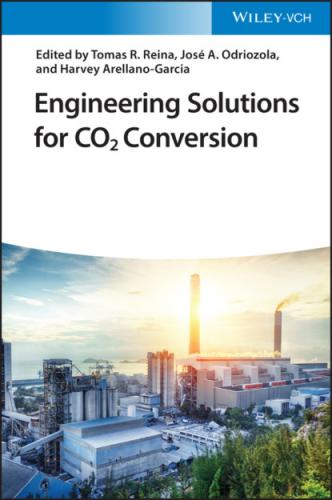Nevertheless, oxyfuel technology is still far from being implemented in the most of targeted industrial processes. The main reason is related to the O2 supply, which is not economically feasible for those applications. Currently, almost all the O2 is produced by cryogenic distillation of air. This process, which is operated at very low temperatures and high pressures, requires from high energy and large production plants that avert its consideration for O2 on‐site production in small‐ and medium‐scale installations. An appealing solution for implementing an O2 supply system in such applications can be performed by considering oxygen transport membranes (OTMs). OTMs are ceramic membranes consisting of metallic oxides with the ability of diffusing O2− ions through the oxygen vacancies present in their crystal lattice. This is due to the mixed ionic–electronic conductivity (MIEC) of these materials at high temperatures (>600 °C), thus allowing O2 separation with 100% selectivity from a high pO2 feed stream (pressurized air) to a low pO2 sweep stream (vacuum or recirculated flue gas stream). Furthermore, waste heat streams generated in high‐temperature processes in several industries requiring from O2 supply for conducting combustions (e.g. cement plants, ceramic and glass production, and power plants) can be used for heating the OTM modules up to their operating temperature. This thermal integration can then result in a significant increase in plant efficiency and in a reduction in O2 production costs, which can be lowered up to 35% with respect to conventional cryogenic distillation [34].
3.3.1 Oxygen Transport Membrane Fundamentals
The ceramic materials exhibiting MIEC properties that are considered for constituting OTMs because of their good O2 permeation properties are known since the 1970s [35–37]. OTMs typically consist of dense layer(s) of multimetallic oxides comprising alkali, alkali earth, rare earth, or transition metals together in the same crystalline structure. The O2 permeation through a ceramic membrane comprises several steps, which are depicted in Figure 3.4a,b.
As can be seen in Figure 3.4a,b, O2 permeation depends on two main processes: oxygen bulk diffusion (step 5) and oxygen surface reactions (steps 2–4 and 6–8). Figure 3.4c depicts O2‐bulk diffusion through oxygen vacancies in the material's cristal lattice. Typically, O2 permeation is described by using Wagner's equation (Eq. (3.4))
where J(O2) is the O2 flux through the membrane, R is the gas constant, T is the temperature, F is Faraday's constant, L is the membrane thickness, pO2″ and pO2′ stand for the O2 partial pressures at feed and permeate sides, respectively, and σel and σion are the electronic and ionic conductivities of the considered membrane material, respectively. Wagner's equation describes the O2 permeation through the material bulk (step 5 in Figure 3.4a,b), when the membrane is thicker than the value known as the characteristic thickness Lc [38], which is distinctive of every material.
Figure 3.4 (a, b) Steps involved in the oxygen permeation through an oxygen transport membrane and (c) representation of the oxygen anion diffusion through the oxygen vacancies present in a perovskite's crystal lattice and (d) fracture cross.
Source: (c) Bouwmeester and Burggraaf [38].
For thinner membranes and for temperatures typically lower than 800 °C, J(O2) does not depend on O2− bulk diffusion but on oxygen surface exchange kinetics. These surface reactions involve a number of steps that may include O2 adsorption, O2 dissociation into O2− and electrons, charge transfer, surface diffusion of intermediate species, and finally O2− incorporation into the material crystal lattice [39, 40]. A general expression for describing J(O2) can be obtained by assuming linear kinetics of the relevant rate laws when both surface exchange reactions and bulk diffusion are governing the O2 permeation and then J(O2) [41] can be expressed by means of the following expression:
(3.5)
where
Therefore, the O2 permeation of an OTM depends on temperature, membrane thickness, pO2 gradient between the two membrane sides, and the MIEC properties of the considered material. Then, higher O2 fluxes can be achieved by operating at higher temperatures and larger pO2 gradients (use of pressurized feeding or high vacuum or sweeping flows), by using thinner membranes (material brittleness will require the use of porous supports for ensuring mechanical stability as depicted in Figure 3.4d where a thin supported membrane is shown) and by selecting materials with high ionic and electronic conductivities.
The most considered materials for being used as OTMs are those with perovskite and fluorite crystal structures [38]. In addition to these materials, other compounds that also exhibit interesting properties are pyrochlore (A2B2O7), brownmillerite (A2B2O5), Ruddlesden–Popper series (An+1BnO3n+1), orthorhombic K2NiF4‐type structure materials, and Sr4Fe6−xCoxO13 [42–45]; nevertheless, the performance of this materials is very low in comparison with fluorites and perovskites. Among the mentioned structures, the perovskite with composition Ba0.5Sr0.5Co0.8Fe0.2O3−δ (BSCF) is that presenting the highest O2 permeation up to date, achieving an O2 production of up to 67.7 ml min−1 cm−2 at 1000 °C for a 70 μm thick membrane [46]. Nevertheless, the unpractical stability under certain environments (especially when exposed to CO2 atmospheres) makes BSCF‐based membranes unsuitable for
